festive duck
First things first – Happy Birthday to my BBF, Jennifer Markett, who lives in Illinois! I LOVE YOU! And if you were here with me, I would be serving you this wonderful duck strudel! xoxo
Pictured above is my collection of authentic vintage French confit pots. Pretty, aren’t they? Duck confit has been a preservation method, for cooking and keeping duck in its rendered fat in France, for centuries. It results in supremely tender, moist, and extremely flavorful duck. You can then sear the duck legs in a hot skillet and serve them as is, shred the meat and add it to salads, or into the delicious and festive strudel recipe, I have for you below.
One of the great things about this strudel is that you can assemble the entire thing a month in advance and freeze it. Pop it in the oven for your Christmas celebrations and impress your guests! It is out of this world glorious!
A sealed glass jar of confit may be kept in the refrigerator for up to six months, or several weeks if kept in a reusable plastic container. To maximize preservation, the fat should top the meat by at least one inch. As the fat turns solid and prevents any air from reaching the meat, so basically the confit technique is a way of hermetically sealing the meat. The cooking fat acts as both a seal and preservative and results in a very rich taste.
I have been collecting authentic confit pots from France for a while now. Before refrigerators, the pots were used to “refrigerate” the confit. The entire inside of the pot is glazed and the glaze drips decoratively down the outside rim of the pot. The rest of the outside of the pot is left unglazed. The pot was filled with the duck and sealed with the fat. The pot was then buried in the cold mud and the unglazed outside of the pot would soak up that coldness and keep the duck confit perfectly chilled until ready to dig out and use.
The amount of duck confit used in this recipe is small, only 4 ounces. So instead of going to the trouble to make my own confit, I purchased a leg quarter from Chef Vincent Guerithault of the famed Vincent’s on Camelback. Call ahead, and Chef Guerithault will happily sell you some too. Or you can make your own duck confit, I’ve included a recipe from Epicurious.com at the bottom of this post. It is not difficult, just time-consuming. You will need to salt the duck for at least 24 hours before beginning and you have to render duck fat from the duck skin, which I have posted about before. The link on how to do that is there in the recipe too. But if you just purchase the confit, you can get going on the strudel recipe…. right now!
Boursin Duck Strudel
3/4 cup (1 1/2 sticks) unsalted butter, divided
8 ounces (about 3 cups) assorted wild mushrooms (cremini, shiitake, morel, etc.), cleaned and sliced 1/8-inch thick
1/4 cup peeled and minced shallots
1 garlic clove, peeled and minced
2 teaspoons minced fresh rosemary leaves
1 teaspoon fresh thyme leaves
4 cups fresh baby spinach, lightly sprinkled with water
4 ounces duck confit, shredded
Salt and freshly ground black pepper to taste
10 sheets phyllo dough, thawed according to package directions
1 container Bourin cheese spread, cold
1 1/2 cups finely shredded Fontina cheese, divided
Preheat oven to 350 degrees. Melt 1/4 cup (1/2 stick) of the butter in a large sauté pan. Add mushrooms, shallots, garlic, rosemary, and thyme; cook 3 to 5 minutes or until mushrooms render their liquid; transfer to a bowl and set aside.
In the same pan, sauté spinach until wilted. (It always amazes me how the spinach goes from something to nearly nothing once it is sautéed.) Transfer to a strainer and drain. When cool enough to handle, squeeze spinach dry and then place on a cutting board and chop.
Combine with the mushrooms and set aside.
Place the remaining stick of butter in a glass bowl and melt in the microwave. Cover phyllo dough with a towel to prevent it from drying. Remove two sheets of phyllo and place them side-by-side on a work surface.
Brush each sheet with melted butter then top each with another sheet of phyllo and brush each with butter. The pretty little brush pictured above is a goose-feather brush made especially for working with phyllo. You can purchase one at any high-end kitchen store or HERE {scroll to the very bottom of the page}…. or just use a regular pastry brush. 🙂
Season each with pepper and then crumble and sprinkle with about 1/3 of the Boursin cheese, dividing between the two stacks. Next, sprinkle each stack with about 3 tablespoons the Fontina cheese. Repeat layers twice; end with a layer of phyllo dough and brush that top sheet with melted butter.
Add the remaining Fontina cheese and the shredded duck confit to the mushroom mixture and stir well to combine.
Place the filling along the long edge of the dough that is closest to you. Roll each into a log shape. Place on a baking sheet and brush with butter.
Note: At this time the strudels make be frozen. Transfer the baking sheet to the freezer for 2 hours. Carefully remove each strudel from the baking sheet and wrap first in plastic wrap and then in foil. Return to freezer for up to one month. When ready to bake, unwrap and transfer to a baking sheet. Proceed with the recipe, adding about 5 minutes to baking time or until golden brown.
Bake 20 minutes or until golden brown. Cool slightly and then use a serrated knife to slice each roll into 8 sections.
Make 16 slices
——————————————
3 tablespoons salt
4 cloves garlic, smashed
1 shallot, peeled and sliced
6 sprigs thyme
Coarsely ground black pepper
4 duck legs with thighs
4 duck wings, trimmed
About 4 cups of rendered duck fat
Sprinkle 1 tablespoon of salt in the bottom of a dish or plastic container large enough to hold the duck pieces in a single layer. Evenly scatter half the garlic, shallots, and thyme in the container. Arrange the duck, skin-side up, over the salt mixture, then sprinkle with the remaining salt, garlic, shallots, thyme, and a little pepper. Cover and refrigerate for 1-2 days.
Preheat the oven to 225 degrees. Melt the duck fat in a small saucepan. Brush the salt and seasonings off the duck. Arrange the duck pieces in a single snug layer in a high-sided baking dish or ovenproof saucepan. Pour the melted fat over the duck (the duck pieces should be covered by fat) and place the confit in the oven. Cook the confit slowly at a very slow simmer — just an occasional bubble — until the duck is tender and can be easily pulled from the bone, for 2-3 hours. Remove the confit from the oven.
When cool, the meat can be transferred to a canning jar or other container and completely submerged in the fat. Cover with at least 1-inch of fat and keep refrigerated for up to 6 months.

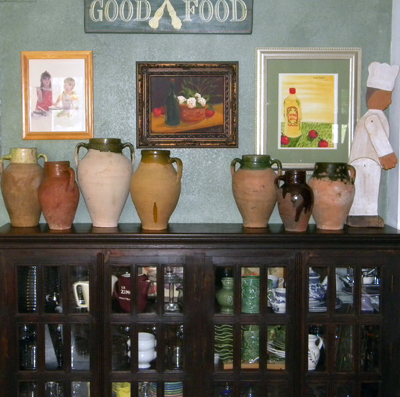
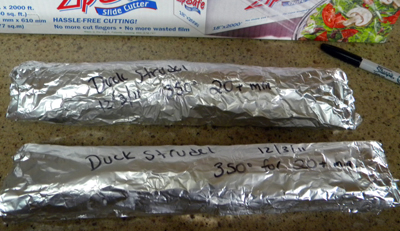
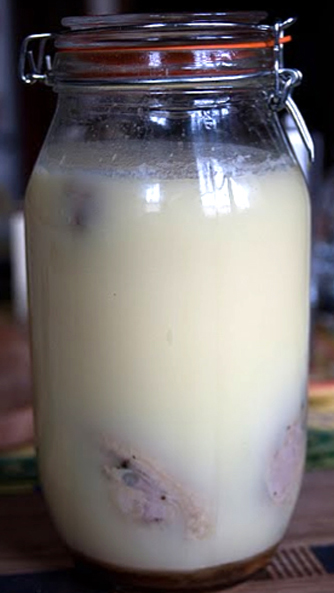


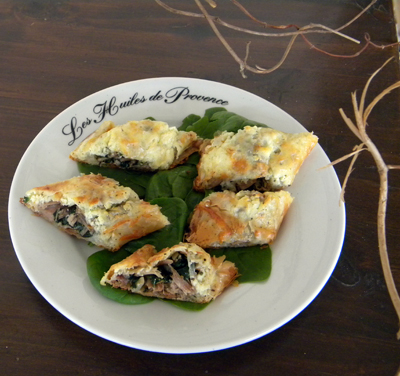

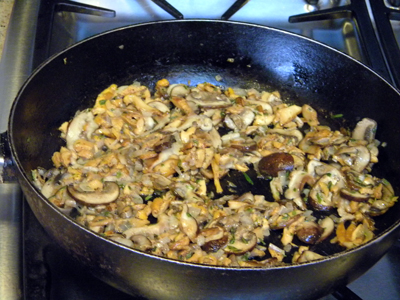
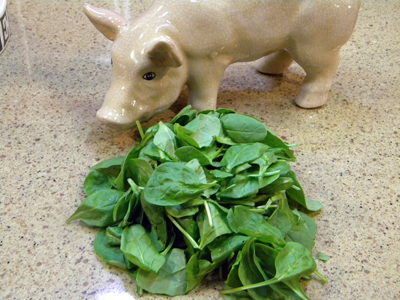
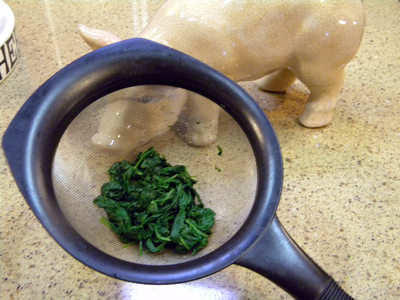
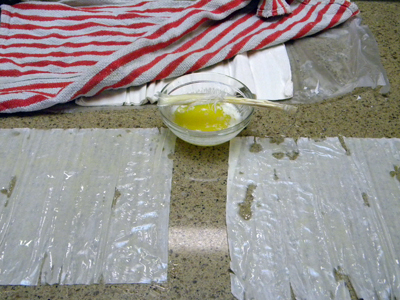
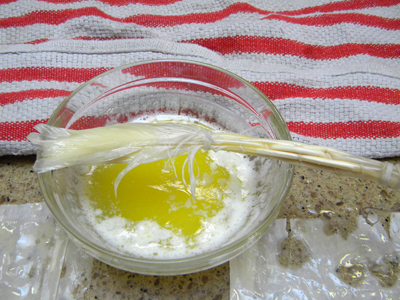
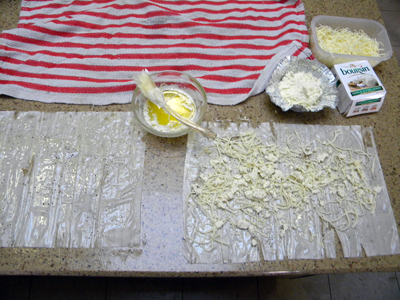
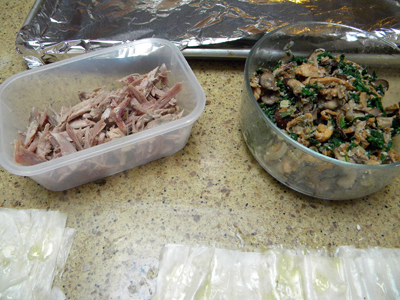
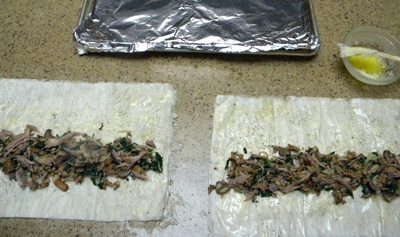

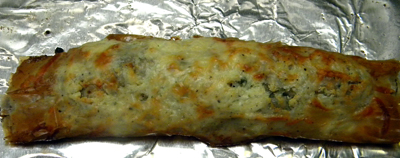




1 comment
That looks so yummy!
Leave a Comment